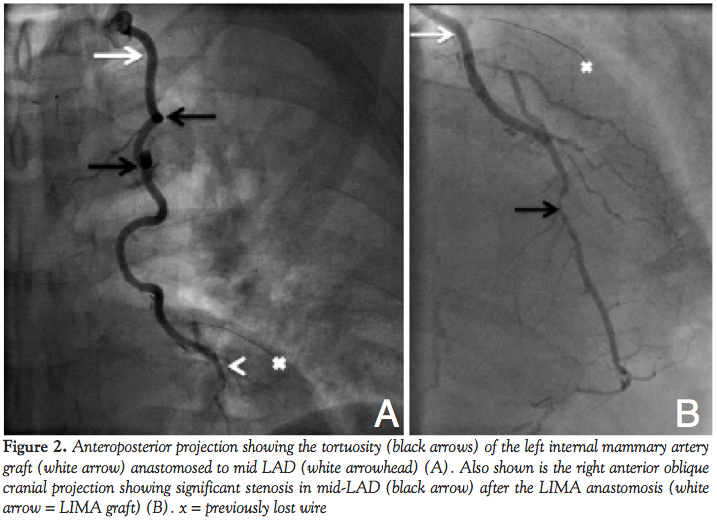
LSD by a guide catheter/guide extension occurred equally with all platforms, however, LSD associated with secondary devices only occurred with the Element stent. LSD is more common than previously reported.

Multivariate predictors of LSD were the Promus Element stent (OR 5.53 CI), Guideliner use (OR 22.09 CI), postdilation balloons (OR 5.47 CI) and number of stents deployed (OR 2.06 CI. Univariate predictors of LSD were previous CABG, culprit vessel, ostial involvement, and lesion tortuosity. Re-entering the deformed stent was more difficult in cases of secondary device LSD (6/9 compared with 0/12 treated cases P < 0.001). Secondary device LSD occurred exclusively with Promus Element (9/450 cases (P < 0.0001). The incidence of guide catheter/guide extension LSD was similar across platforms (Promus Element, Xience V, Biomatrix, Resolute P = 0.85). LSD was characterized as guide catheter/guide extension induced, or as impact from secondary devices such as postdilatation balloons or IVUS catheters.

LSD was detected in a higher proportion with Promus Element compared with other platforms (Xience V, Biomatrix, Resolute P = 0.002). To assess the incidence and mechanism of LSD across commonly used DES platforms, we performed a case-by-case review of 1,800 PCI cases involving 450 consecutive procedures using Biomatrix Flex, Resolute Integrity, Promus Element, and Xience V stents, respectively, between January 2009 and December 2011.

There is conflicting evidence regarding the incidence of longitudinal stent deformation (LSD) in contemporary practice.


 0 kommentar(er)
0 kommentar(er)
